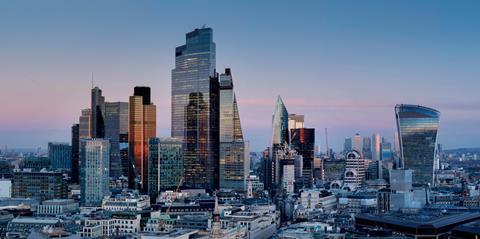Martyn Evans argues that one of Britain’s largest and most vital industries remains hidden in plain sight, calling for government and business to recognise the built environment as a unified sector central to national prosperity

There is a vast, world-shaping industry in Britain that we scarcely recognise as an industry at all. It employs nearly four million people, contributes almost a quarter of national output, and touches every aspect of our daily lives, from where we live and work to how we travel and learn.
And yet, when policymakers in Westminster talk about “key growth sectors”, it rarely even makes the list. This is the built environment, the ecosystem of professions, trades, technologies and services that together design, construct, manage and sustain the places we inhabit.
A recently published report, The Built Environment Sector, from New London Architecture (NLA), produced with GLA Economics, LSE and Polygon Place Strategy, exposes just how extraordinary this hidden powerhouse really is. Taken together, the professions and services that make up the built environment contribute around £568 billion to the UK economy every year, a staggering 24 per cent of national GVA, and account for roughly 3.8 million jobs, or 12 per cent of the total workforce.
To put that in perspective, the built environment is twice the size of financial services and four times larger than the creative industries.
And yet, despite this scale, the sector is treated almost as an administrative afterthought. It is split across government departments, fragmented in statistics, and invisible in industrial strategy. Architecture is filed under “creative industries”, construction under “infrastructure”, engineering under “manufacturing”, and property under “real estate and finance”.
But when you step back, it is clear that all of these activities are part of one continuous chain, from conception to completion to operation, united by a single purpose: shaping the physical fabric of the nation.
This fragmentation has consequences. Without a coherent identity, the built environment has no single voice in government, no integrated policy framework, and no clear channel for investment or innovation. Decisions that affect its future, on planning, housing, skills, sustainability, procurement and taxation, are made in silos.

The result is duplication, inefficiency and missed opportunity. We talk endlessly about productivity and growth, yet one of our most productive and employment-rich industries is hiding in plain sight, under-recognised and under-supported.
Imagine if the financial sector were treated this way, its components scattered between departments, its data buried in the footnotes of government reports. It would never have achieved the global dominance it enjoys today. In fact, the financial services sector only became politically powerful once it was recognised as a single entity.
Before the “Big Bang” reforms of the 1980s, banking, insurance, accountancy and legal services were regarded as separate professional domains. By bringing them under one umbrella, the City created a collective identity that commanded strategic attention and tailored policy. The built environment deserves the same clarity of definition and the same level of government focus.
The potential gains are enormous. A unified built environment sector could drive innovation, investment and exports at a scale that rivals Britain’s other leading industries. Our architects and engineers already win work across the world, yet we rarely brand or promote them as part of a coherent national industry.
Our construction and real estate companies are pioneering low-carbon materials, off-site manufacturing and digital design, but they operate within fragmented regulatory regimes. Our facilities managers and retrofit specialists are critical to achieving net zero, yet they are seldom included in industrial strategy. If government recognised this as one interconnected ecosystem, it could design policies that amplify rather than dilute the power of its constituent parts.
A coherent industry identity would also transform how we develop and retain talent
At a time when the UK faces a daunting list of structural challenges, from housing shortages and crumbling infrastructure to the climate crisis and regional inequality, the built environment is central to every solution. We cannot build greener, fairer, more prosperous communities without harnessing the collective capability of those who design, construct and manage them. But this will only happen if we treat the built environment not as a cost to be controlled, but as an engine of growth to be cultivated.
A coherent industry identity would also transform how we develop and retain talent. With almost four million people employed across the value chain, the built environment offers routes into skilled and secure work for every level of education and experience.
But the current fragmentation means there is no unified skills framework, no clear career pathways between related disciplines, and no central coordination of training or apprenticeships. Recognising the built environment as a single industry would make it possible to plan a national workforce strategy, one that connects trades and professions, strengthens regional economies, and provides mobility across disciplines as technologies evolve.
Then there is the question of innovation. A single, recognised built environment sector could qualify for targeted R&D funding, challenge-led investment and cross-sector innovation programmes.
It could pool research in areas such as decarbonisation, modular construction, digital twins and circular materials, all vital to the UK’s competitiveness in a global market that is rapidly transitioning to sustainable, tech-enabled infrastructure. The current piecemeal approach, with each sub-sector chasing its own limited pot of grants, is not fit for purpose.
Critics might say the built environment is too broad and diverse to be treated as a single sector. After all, what do an architect and a brick manufacturer really have in common? The answer is: more than enough. Other major industries encompass wide variation, think of how “life sciences” unites pharmaceutical companies, biotech start-ups and hospital suppliers under one strategic umbrella.
This is not a plea for special treatment, but for accurate recognition
The point is not to erase differences, but to create a shared framework for coordination, investment and policy. A unified built environment industry would still contain distinct professions and specialisms, but it would operate with a collective sense of purpose.
Equally, some will worry about adding another layer of bureaucracy. But the current system is already bureaucratic, only in a disjointed, inefficient way.
Planning policy, infrastructure investment, housing delivery, energy retrofits and skills training are managed by different departments with overlapping responsibilities and conflicting priorities. A single ministerial office or cross-departmental taskforce for the built environment could streamline rather than complicate government decision-making, providing clarity of accountability and purpose.
The NLA’s report is a wake-up call to policymakers. It gives us, for the first time, a rigorous evidence base to quantify the built environment’s economic weight.
It shows that what we have long treated as a background activity, the stuff that happens after the “real” industries have done their work, is in fact one of Britain’s most vital engines of prosperity. The report calls for nothing less than a “Big Bang” moment for the built environment, a collective recognition by government, business and the professions that they are all part of one industry, and that only by working together will they realise their full potential.
This is not a plea for special treatment, but for accurate recognition. The built environment is not an appendage to other sectors; it is the stage upon which all others perform.
Every factory, school, hospital, home and office exists because of it. Every goal we have for growth, productivity and sustainability depends on it. The government cannot afford to keep treating this sprawling ecosystem as a set of disconnected fragments.
It is time to name it, unify it and elevate it, because the built environment is not just where we live and work. It is one of the most important industries we have.
Postscript
Martyn Evans is creative director of Landsec.
















No comments yet